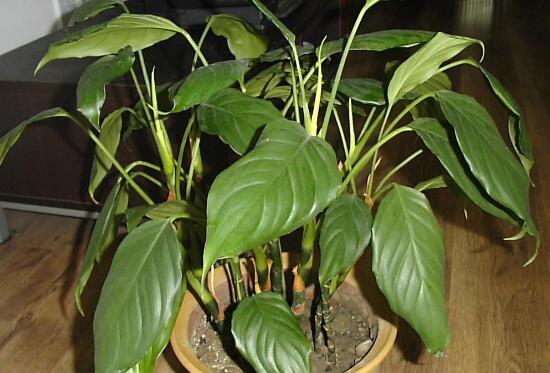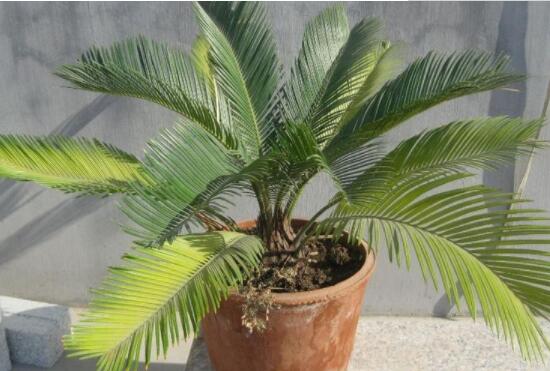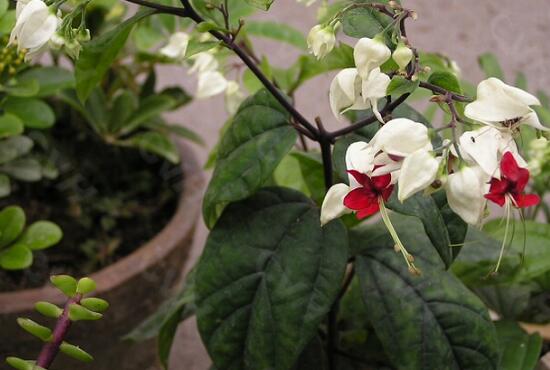What about the evergreen worms in Guangdong? the prevention and control of five common diseases and insect pests of evergreen in Guangdong.
As a common foliage plant, the breeding method of Guangdong evergreen is not difficult, and it looks good, so it is kept at home by many people. However, there are many novice farmers, they simply do not follow the method of systematic maintenance, as a result, the plant worms get sick. So, what about the evergreen worms in Guangdong? In this regard, the editor summed up five kinds of Guangdong evergreen common diseases and insect pests, let's go and have a look!
Guangdong evergreen worms are sprayed with medicine.

Back home, looking at the big green leaves of Guangdong evergreen, the fatigue of human eyes will be relieved for a moment. However, beautiful things, we need to take good care of, once improper breeding, Guangdong evergreen worms get sick, will seriously affect the ornamental. As for what to do with the evergreen worms in Guangdong, it is actually very simple to determine the specific insect pests, and then solve the problem by spraying.
II. Pest control of evergreen in Guangdong
1. Brown soft scale
When it comes to Guangdong evergreen worms, it is generally brown soft scale. The insect is small and often gathers together, which mainly damages the leaves of the plant, affects the photosynthesis of the plant, and causes the leaves of Guangdong evergreen to turn yellow and hinder the ornamental.
Control method: when brown soft scale is found, it can be brushed off with a brush, and then rinsed with water; then 50% omethoate emulsion or 50% long-acting phosphorus can be sprayed, and the control effect can be achieved at one time.
2. Red spider
One of the mites, it is also one of the common pests of evergreen in Guangdong. The insect often occurs when the ventilation is poor, which will harm the top of the plant, causing the top of Guangdong evergreen to turn reddish brown and have cobwebs, affecting the growth and development of the plant.
Prevention and control methods: after discovering diseases and insects, you can use enemy killing to deal with them, and you can also spray anti-mite 25% EC 800x solution, 73% acarate 2000 times liquid and other drugs.
3. Leaf spot
When the indoor temperature fluctuates greatly in a short period of time, or too much watering during the dormant period, Guangdong evergreen is easy to suffer from leaf spot disease. When the disease occurs, the leaves of Guangdong evergreen will appear many small brown spots, and in serious cases, the spots will spread all over the leaves.
Prevention and treatment methods: when the above diseases are found, remove the diseased leaves in time and destroy them centrally, so as to reduce the source of the disease; then spray 65% Dysen zinc 500 times or 25% nitrilazole EC 800 times for prevention and treatment, every 10 to 15 days, spraying the solution twice can be effective.
4. Anthrax
When it comes to what diseases Guangdong evergreen will suffer from, anthracnose is an indispensable disease that mainly harms leaves. At the beginning, several yellowish, dark brown or light gray areas will appear in the affected areas. With the passage of time, it will infect stems and branches and seriously affect the growth of plants.
Prevention and treatment methods: when the above diseases are found, cut off the diseased leaves in time and burn them centrally in order to reduce the source of the disease; in severe cases, spray 1000 times of carbendazim or 1000 times of methyl topiramate for antisepsis, which can be effective after 2-3 times.
5. Brown spot
In addition to the above diseases and insect pests, brown spot is also a common disease among thousands of young people in Guangdong. The disease mainly harms leaves, resulting in grass-yellow wet disease spots on the edge and tip of leaves; in severe cases, leaf spots expand and turn into brown macula, affecting plant growth and reducing ornamental value.
Prevention and treatment methods: when the above diseases are found, spraying should be applied. 50% carbendazim wettable powder 600-800 times, or 50% methyl carbendazim and sulfur suspension 600-800 times, alternately sprayed 3 to 4 times, once every 7 to 8 days, has a better control effect.
About Guangdong evergreen pest control, the editor introduced here, I believe you encounter Guangdong evergreen worms or illness, you should know how to do it! Generally speaking, without paying attention, Guangdong evergreen is easy to be disturbed by diseases and insect pests, so we must take good care of it. As long as this is the case, bugs will not come to us. Finally, I wish everyone's Guangdong evergreen can grow beautiful ~
What if thick-skinned plants grow worms? prevention and control of four common diseases and insect pests of thick-skinned plants
Thick-skinned plant, a plant with strong adaptability, one of its leaves can take root immediately when it falls into the soil! Such plants are not easy to grow worms and get sick, but there are so many newbies that they can't raise them at all, so they feed the bugs. So what if the thick-skinned plant grows worms? Here are four kinds of pest control for cheeky plants. Let's go and have a look.
First, thick-skinned plants grow worms, spray with medicine
In the process of the growth of thick-skinned plants, the plant will inevitably get sick. The main pests are shell insects and aphids, and the main diseases are Botrytis cinerea and powdery mildew, which will affect the growth of thick-skinned plants. Therefore, as soon as it is discovered, it should be sprayed immediately for prevention and control. As for what kind of medicine should be sprayed, we go on to look at the pest control of thick-skinned plants.
2. Control of four kinds of diseases and insect pests of thick-skinned plants
1. Scale insects
Although thick-skinned plants are not easy to produce insects, they can also produce shell bugs when the environment is not ventilated and properly maintained. The insect sucks the sap from the leaves and twigs with stinging mouthparts, which affects the normal growth and development of the plant, and the branches or leaves die in severe cases.
Prevention and control methods: after a small amount of shell insects are found, they can be brushed off gently with a soft brush and then rinsed with water; when the scale insects are too long, the medicine should be sprayed, and the agent can be used to kill the scale 800-1000 times, generally, the control effect can be achieved at one time.
2. Aphids
Indoor potted plants are one of the most common pests, which also endanger the health of thick-skinned plants. Aphids mainly harm the young leaves and stems of thick-skinned plants, which are parasitic on leaves and absorb juice. Once aphids appear, they are dense and look very scary, so protection should be timely.
Prevention and control methods: when a small number of aphids are found, you can use tools such as a brush to brush off the insects; when there are many aphids, you need to use the relevant insecticides. The editor recommends that you use 2.5% fish rattan essential EC 1200 times, and the effect is excellent after spraying several times in a row.
3. Grey mold
The disease invades mainly through weak host tissue and can harm the stems, leaves and flowers of the plant, mainly flowers. When thick-skinned plant leaves, petioles, gray-white, water stains, and even tissue softening to rot, may be suffering from gray mold.
Prevention and treatment methods: find the above symptoms, cut off the diseased leaves in time to reduce the source of the disease; at the initial stage of the disease, you can spray 1000 times of methyl thiophanate wettable powder, or 50% carbendazim wettable powder 800-1000 times for prevention and treatment, spray once a week, spray 2 times 3 times.
4. Powdery mildew
Powdery mildew is another disease of thick-skinned plants, which mainly harms leaves, tender stems, flower buds and buds. Symptoms: there are many white dust spots on the leaves of thick-skinned plants, which affect their photosynthesis and even lead to plant death over a long period of time.
Prevention and treatment methods: cut off the seriously diseased plants or seriously diseased parts in time, and burn them centrally to reduce the source of the disease; at the initial stage of the disease, you can spray 50% carbendazim wettable powder 800 times solution, 80% Dysen zinc 500 times solution, 75% chlorothalonil 500 solution for prevention and treatment, the effect is better alternately.
With regard to the pest control of thick-skinned plants, the editor has introduced this. I believe that if you encounter worms or illness again, you should know how to do it! Generally speaking, thick-skinned plants are not easy to produce insects, as long as we follow the cultivation methods of thick-skinned plants to maintain, bugs will not come to the door. Finally, may all the cheeky plants grow green and strong!
Drunken fish grass worms how to do, drunk fish grass common diseases and insect pests control / 2 insect pests 2 diseases
When we cultivate drunken fish and grass, the last thing we want to encounter is diseases and insect pests. This kind of problem is very harmful to the plant, which will not only affect its beautiful plant shape, but also lead to plant death in serious cases. So what if the drunken fish grass grows worms? How to prevent and control the common diseases and insect pests of drunken fish grass? Next, the editor will take you to learn about it.
First, drunken fish grass worms how to do, find the reason
If you want to know what to do when the drunken fish grass grows, we must first understand what kind of worm is growing, so that we can deal with it pertinently, because the treatment methods of each kind of diseases and insect pests are different, and the details are described in detail below. Friends who are troubled in this respect can learn about it.
II. Control of common diseases and insect pests of drunken fish and grass
1. Whitefly
Whitefly is a small herbivorous pest belonging to Hemiptera. It mainly harms the new buds, leaves and flowers of drunken fish grass. It will be inserted from the back of the leaves with piercing mouthparts, and then gradually suck up the juice. This leads to the loss of a large amount of nutrients in the plant and the phenomenon of yellowing and wilting.
Control method: for this kind of drunken fish grass disease and insect pest, we can use 1500 times EC spray to directly kill it, it can kill eggs, nymphs and adults.
two。 Aphids
Aphids are one of the most destructive pests on earth, which are harmful to many plants, and drunk fish grass is one of them. The main damage of this pest is that adults and nymphs feed on leaves, stems, tender heads and tender panicle sap, resulting in a large loss of plant nutrients and wilting.
Control method: when we deal with this drunken fish grass disease and insect pest, we can spray it with 3000 times of aldicarb wettable powder or 2.5% 3000 times of methomyl emulsion.
3. Soft rot
Among the diseases and insect pests of drunken fish grass, soft rot is a relatively common disease. During the onset of the disease, many water-like spots will appear on the roots of the plant, and the rhizome will gradually rot and emit a stench with the passage of time. Finally, it gradually rots to death.
Prevention and treatment: in the prevention and control of this disease, we can use 38% cuproloxil diluted by 1000 times to carry out root irrigation treatment, generally once a week, after 2-3 times can be prevented.
4. Leaf spot disease
Leaf spot is a common plant disease, its high incidence period is generally in spring and autumn, when the disease occurs, many oval brown disease spots will appear on the leaves of drunk fish grass, and with the passage of time, the disease spot will gradually spread, and the color will slowly become darker. Finally, the plant can not carry out photosynthesis and die.
Control method: for this drunken fish grass disease and insect pest, we can use 20% silazole ·prochloraz 1000 times to spray the diseased plant, usually spray once every 7-10 days, and then recover after 2-3 times.
- Prev

What to do when the iron tree grows insects? pest control of the iron tree / 2 insects and 2 diseases are sprayed with medicine.
I believe many flower friends know that the iron tree is poisonous, but even so, some people still keep it at home because the iron tree is really good-looking. However, in the process of breeding, because of negligence, the iron tree will also grow insects and get sick, which will destroy its ornamental. So, what should we do if the iron tree grows worms?
- Next

What to do when the dragon spits beads to grow insects? control of seven kinds of diseases and insect pests / 4 insects and 3 diseases
As a common ornamental flower, the breeding method of dragon spitting beads is not difficult, and it is extremely beautiful, so it is kept at home by many people. But because there are so many rookies, they usually do not raise them according to the method in the process of breeding, resulting in the disease of plant worms. So, what should we do if the dragon spits beads and grows worms? To this
Related
- Fuxing push coffee new agricultural production and marketing class: lack of small-scale processing plants
- Jujube rice field leisure farm deep ploughing Yilan for five years to create a space for organic food and play
- Nongyu Farm-A trial of organic papaya for brave women with advanced technology
- Four points for attention in the prevention and control of diseases and insect pests of edible fungi
- How to add nutrient solution to Edible Fungi
- Is there any good way to control edible fungus mites?
- Open Inoculation Technology of Edible Fungi
- Is there any clever way to use fertilizer for edible fungus in winter?
- What agents are used to kill the pathogens of edible fungi in the mushroom shed?
- Rapid drying of Edible Fungi

